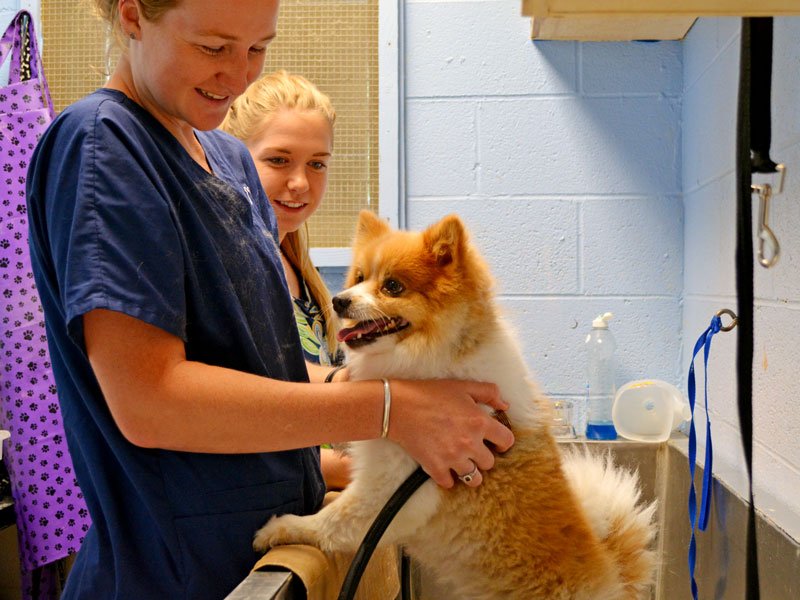The fact that the dog gets sick is one of the fears that every owner has. We tell you which are the most common diseases among furry people so you can detect them in time. Take note!
Knowing the enemy is the first step to victory, and if we take this principle of the Art of War to the canine world, we are clearly referring to the dangers that can lurk in our furry world. Insects, viruses and bacteria. The more we know about all of them, the more we can prevent and detect any disease.
Some diseases such as Leishmania are already more than known, but would you know which diseases are most prevalent in dogs?
Rabies
Rabies is a viral disease that can often be fatal. It is usually transmitted when an animal carrying the disease, such as a fox or bat, bites the dog, but it can also be transmitted through a wound produced by these infected animals.
There are 2 forms of rabies, “rabies” and “paralytic”. Furious rabies causes dogs to develop extreme behavioral changes and will make them extremely aggressive. Paralytic rabies causes weakness and loss of coordination, and eventually paralysis.
Symptoms: high temperature, convulsions, paralysis, falling jaw, inability to swallow, lack of coordination, shyness or aggression, frequent changes in behavior, and foaming at the mouth.
This disease is listed as one of the most serious according to the American Society for the Prevention of Cruelty to Animals (ASPCA). If your dog is bitten or scratched by another animal, or if you suspect he may have come into contact with rabies, contact your vet immediately. It is important that you contact your vet even if your dog has been vaccinated against the disease.
Kennel Cough
Also known as canine tracheobronchitis, kennel cough is a highly contagious and infectious disease. It is transmitted through the air, usually in areas where there is a dense dog population, such as a kennel or show. Treatment for kennel cough is usually given as a nasal spray, although an injection is available.
Symptoms: dry cough, wheezing, and runny nose. Most dogs that get kennel cough will show a lack of appetite, but some will not. The disease can progress to secondary pneumonia and include high temperature, lethargy and, in extreme cases, death.
If your dog shows these symptoms, talk to your vet immediately. If you can, don’t take your dog to the vet until the disease is confirmed or ruled out, as there is a risk he could infect other dogs.

Parvovirus
Canine parvovirus is a highly contagious and potentially fatal viral disease. You can get it from infected dog feces, food bowls, water, clothing, carpets… It is very important that you vaccinate your dog against parvovirus, as it is very contagious and can live on objects for months.
Symptoms: loss of appetite, lethargy, persistent vomiting and bloody diarrhea
Canine Hepatitis
Canine hepatitis, commonly known as Rubarth’s disease, is a viral disease that is often confused with canine distemper. It can be transmitted through feces, urine, blood, and saliva.
Symptoms: high temperature, cough, loss of appetite, depression, vomiting, pale gums, and abdominal pain. Symptoms of jaundice can occur as this disease infects the liver and kidneys. If you suspect your dog has contracted canine hepatitis, contact your veterinarian immediately. Do not let him come into contact with any other dog and clean up after him.
Canine distemper
Canine distemper is a very serious viral disease. It can be transmitted through the air from dog to dog. It is highly contagious and there is no known cure, so it is very important that you vaccinate your dog against it.
Symptoms: high temperature, cough, lethargy, loss of appetite, rapid breathing, red eyes and runny nose. Diarrhea and vomiting can also be symptoms.
Obviously, these aren’t the only illnesses out there, but we’ve chosen them as the most common based on our personal experience. If we enter the world of gastrointestinal problems, for example, this post would have no end and if, in addition, we separate by race and size. So, generally speaking, these are the diseases we have seen the most.
So, you know what the symptoms are that you have to suspect and, remember, reacting to the first symptoms can make a big difference in dealing with these diseases.




